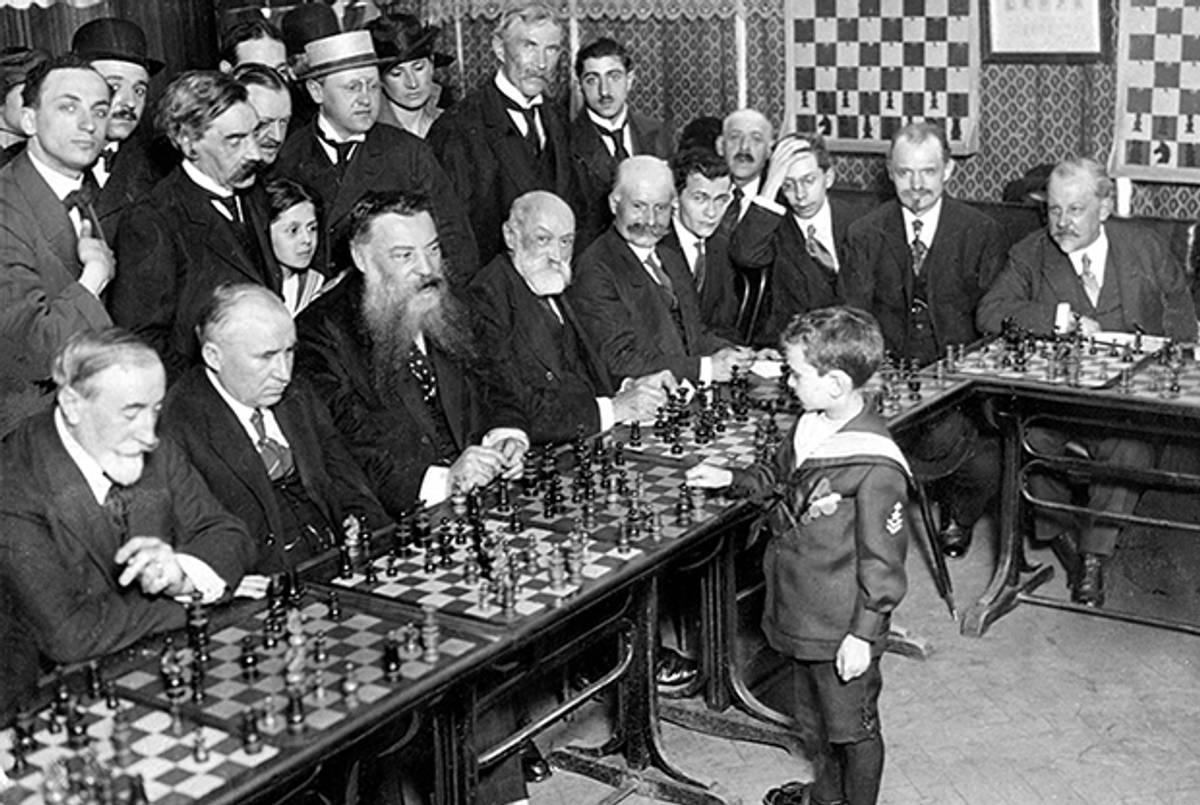
Samuel Reshevky, one of the best chess players in U.S. history, began playing at the age of 4. Born in 1911 in Ozorkow, Poland, Reshevky moved to the U.S. when he was 8. By that time he was so good that he had begun to play in simultaneous exhibitions during which he’d compete against a number of strong players at once.
On May 17, 1920, Reshevky faced 20 players in a simul in Paris. The New York Times covered it then, and posted a picture of the match, with a quote from the article, on its Instagram page yesterday. The article is both a treasured relic of chess history, and a reminder about the how beautifully journalists—and their allowing editors—once wrote.
Here’s the lead paragraph from the article, which includes a 70-word second sentence:
Twenty graybeards sitting in a square played chess yesterday in Paris against a very small boy 8 years old, and he beat them all. Among the graybeards were some of the best players in France, and one at least, whose boast it is that he drew with Capablanca, the Pan-American chess champion, but all their reputation availed them nothing against a frail child with a pale, thoughtful face who moved quietly from one board to another, reducing their most skillful plans and wiles to nothingness and mating them and mating them when they least expected it.
Now that’s how you get readers excited about chess.
Reshevksy, an Orthodox Jew, would become an International Grandmaster at the age of 39, and defeated seven world champions in his lifetime. His main profession, however, was that of an accountant.
Related: Bobby Fischer vs. The Rebbe
Jonathan Zalman is a writer and teacher based in Brooklyn.